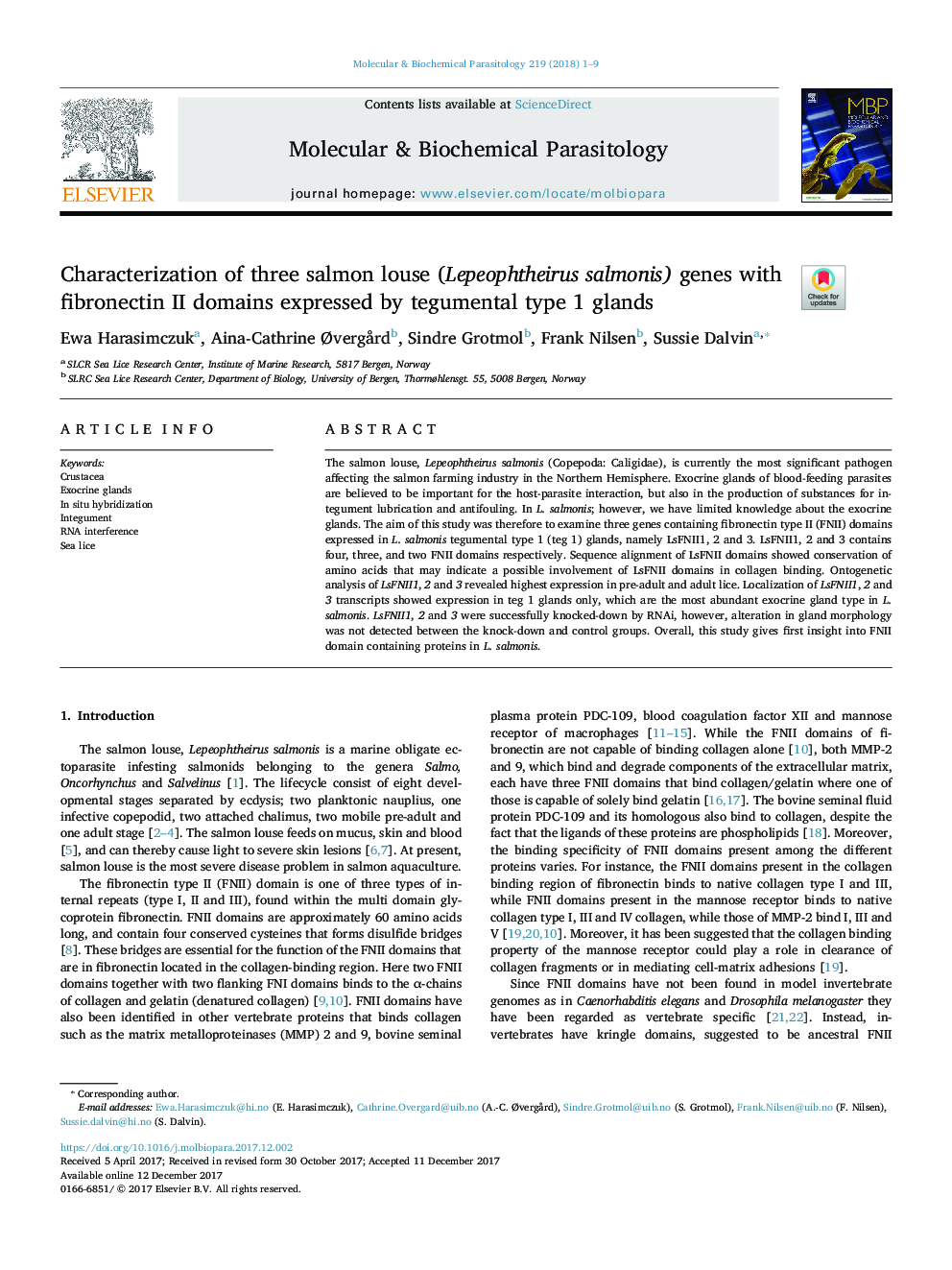| Article ID | Journal | Published Year | Pages | File Type |
|---|---|---|---|---|
| 8648368 | Molecular and Biochemical Parasitology | 2018 | 9 Pages |
Abstract
The salmon louse, Lepeophtheirus salmonis (Copepoda: Caligidae), is currently the most significant pathogen affecting the salmon farming industry in the Northern Hemisphere. Exocrine glands of blood-feeding parasites are believed to be important for the host-parasite interaction, but also in the production of substances for integument lubrication and antifouling. In L. salmonis; however, we have limited knowledge about the exocrine glands. The aim of this study was therefore to examine three genes containing fibronectin type II (FNII) domains expressed in L. salmonis tegumental type 1 (teg 1) glands, namely LsFNII1, 2 and 3. LsFNII1, 2 and 3 contains four, three, and two FNII domains respectively. Sequence alignment of LsFNII domains showed conservation of amino acids that may indicate a possible involvement of LsFNII domains in collagen binding. Ontogenetic analysis of LsFNII1, 2 and 3 revealed highest expression in pre-adult and adult lice. Localization of LsFNII1, 2 and 3 transcripts showed expression in teg 1 glands only, which are the most abundant exocrine gland type in L. salmonis. LsFNII1, 2 and 3 were successfully knocked-down by RNAi, however, alteration in gland morphology was not detected between the knock-down and control groups. Overall, this study gives first insight into FNII domain containing proteins in L. salmonis.
Related Topics
Life Sciences
Biochemistry, Genetics and Molecular Biology
Molecular Biology
Authors
Ewa Harasimczuk, Aina-Cathrine ÃvergÃ¥rd, Sindre Grotmol, Frank Nilsen, Sussie Dalvin,
